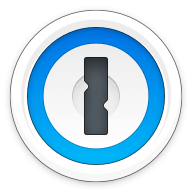Our bottom line: Dashlane has an edge over NordPass for its plan variety and the robust features like a VPN that you can get for a nominal price increase.
NordPass vs. Dashlane Overview
NordPass and Dashlane ranked highly among the best password managers. These services are comparable in platform compatibility, security, and user experience (UX). NordPass stands out for its security with the next-level XChaCha20 encryption, and neither has experienced a breach as of the date of publication. I found both platforms easy to navigate, with free versions comparable and only available on one device.
Where Dashlane really stands out is its offering of robust features like a virtual private network (VPN) and dark web monitoring if you upgrade to the Premium plan. Also, Dashlane provides more plan variety so you can scale up or down.
Which password manager should you get? Let this NordPass vs. Dashlane face-off help you decide.
| Review factor | Winner |
|---|---|
| Price | Dashlane (4.7) |
| Platform compatibility | Dashlane (5.0) |
| User experience (UX) | NordPass (5.0) |
| Form filling | Dashlane (4.7) |
| Security | NordPass (5.0) |
| Two-factor authentication (2FA) | NordPass (5.0) |
| Best overall | Dashlane (4.7) |
NordPass vs. Dashlane: Specs
| Password manager | Details | Basic plan features |
|---|---|---|
| NordPass Overall rating: (4.3) Read our full NordPass review. | Starting price: Free Platform compatibility: Android, iOS, Linux, Mac, Web (Brave, Chrome, Edge, Firefox, Opera, Safari, Vivaldi), Windows Security: XChaCha20 encryption, zero-knowledge policy, multifactor authentication (MFA), account recovery option, secure password sharing, data leak scanning, password health checks, emergency access |
|
| Dashlane Overall rating: (4.7) Read our full Dashlane review. | Starting price: Free Platform compatibility: Android, iOS, Linux, Mac, Web (Brave, Chrome, Edge, Firefox, Opera, Safari), Windows Security: AES 256-bit encryption, 2FA |
|
NordPass vs. Dashlane: Plans and Pricing
Price winner: Dashlane | |
|---|---|
| NordPass (4.0) | $0 for Free, $1.49 per month (two-year promotional rate) for one person and multiple devices, $3.69 per month for Premium Family plan with up to six users. Business plans include $3.59 per user per month for up to 250 users or an Enterprise package subject to custom terms. |
| Dashlane (4.7) | $0 for Free and one device, $2.75 per month for Advanced, $4.99 per month for Premium, $7.49 per month if you pay annually (20% discount). Business plans include Starter for up to 10 seats, billed monthly at $2 per seat; Team for $5 per month, billed annually for unlimited seats; and Business for $8 per seat billed annually. |
NordPass and Dashlane offer free plans for one device only, including basic password manager tools. If all I needed was a no-frills tool, the free option with either password manager would suffice, though only accessing it on one device is restrictive. NordPass offers a step-up plan for one user and multiple devices for $1.49 per month during a two-year promotional period.
Dashlane’s step up to Advanced costs more, but you also get dark web monitoring. The Premium plan offers a VPN to protect your Wi-Fi, and this is not available with NordPass. So, if you are willing to pay a bit more per month, you can unlock a lot more features with Dashlane.
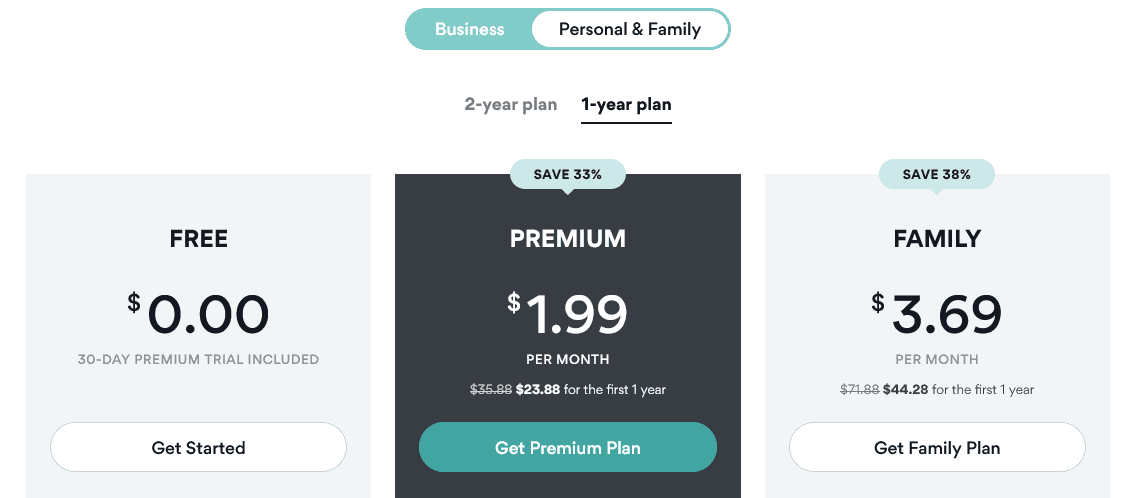
When I consider pricing, I weigh value into the equation. Yes, you will pay a little more for Dashlane subscriptions. But I feel I’m getting a lot more for the money, making Dashlane a more attractive password manager for individuals, families, and businesses.
As for business tiers, Dashlane offers one more plan option than NordPass. As a one-person business, I could subscribe to the Starter tier for $2 per month and up to 10 seats. Though the pricing says it is billed monthly (unlike other business plans that are billed annually) and the cost is $20. So it seems that even if I’m one person, I’m still going to pay $20 per month.
There’s real value in the next level up — the Team plan billed annually for $5 per seat per month. It includes a VPN. Enterprise operations would be best with the Business tier for $8 per seat per month, also billed annually. It includes SSO integration, System for Cross-Domain Identity Management (SCIM) provisioning, a free Friends & Family plan for every user, and on-demand phone support. On its website, Dashlane promotes that brands including Wayfair, PepsiCo, and Bain Capital use its password manager service.
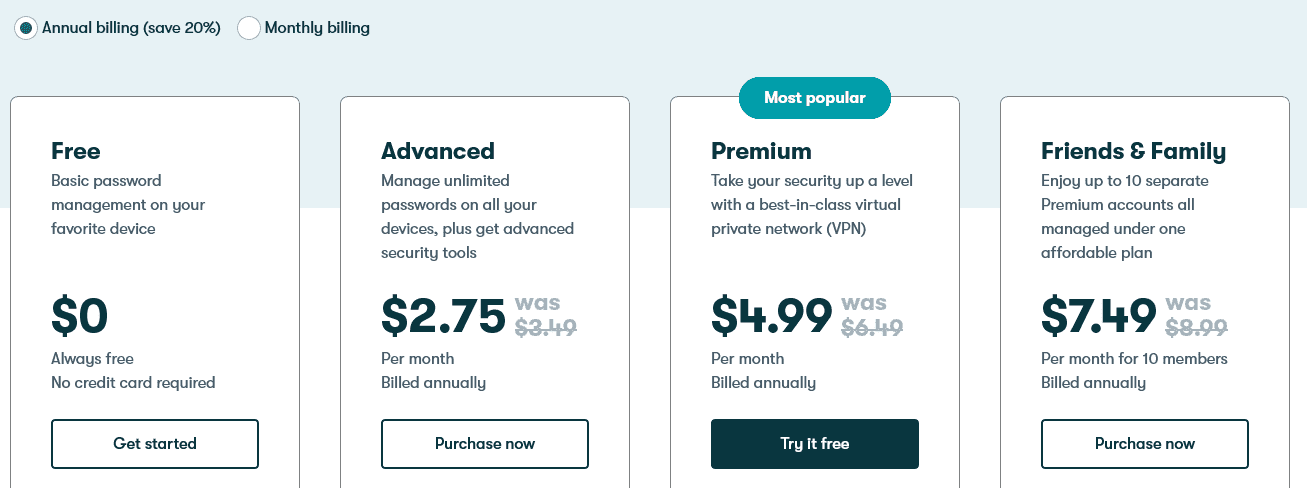
While NordPass is quite a bit less expensive when you compare individual and business plans, Dashlane offers more tier options and more robust capabilities, such as a VPN.
NordPass vs. Dashlane: Platform Compatibility
Platform compatibility winner: Dashlane | |
|---|---|
| NordPass (4.3) | OS: Windows 8 (32/64 bit and up), Linux, macOS version 10.13 and up, Chrome OS (only supports NordPass Web Vault), Android (8.0 and up), and iOS (version 14.0 and up) Supported browsers: Chrome, Edge, Firefox, Opera, Safari, Brave, Vivaldi |
| Dashlane (5.0) | OS: Android (Oreo or later), iOS (15 or later), Linux (latest distributions), Mac (Monterey 12.0 or later), and Windows Supported browsers: Brave, Chrome, Edge, Firefox, Opera, Safari |
NordPass and Dashlane are compatible with similar operating systems and browsers, but Dashlane stands out for its ability to be added to devices like Kindles through the Google Play store.
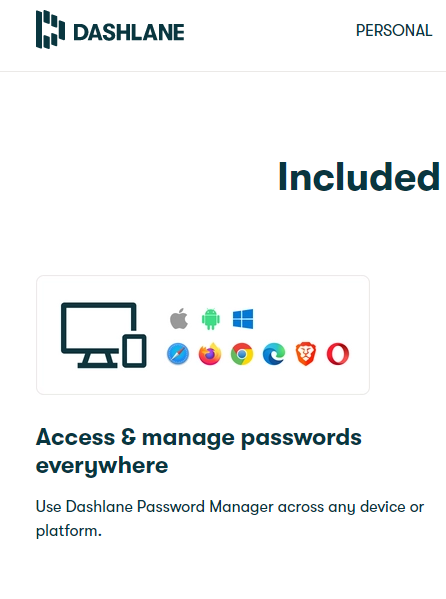
One aspect of compatibility where I think NordPass falls short is with its iOS app. It does not support password generation or auto-save for new passwords. If you generate passwords on your mobile device, you have to manually input them, which somewhat defeats the purpose of having a password manager.
Winner: Dashlane wins platform compatibility because it is available on a wide range of platforms and browsers, including the ability to add it to Kindles.
NordPass vs. Dashlane: UX
UX winner: NordPass | |
|---|---|
| NordPass (5.0) | More graphically pleasing navigation, easy to use |
| Dashlane (4.7) | Simple interface is user-friendly |
The look and feel of NordPass’s dashboard is more appealing and modern, but for all intents and purposes, NordPass and Dashlane are both intuitive and easy to learn. I had no problem finding my way around either of the password managers’ dashboards.
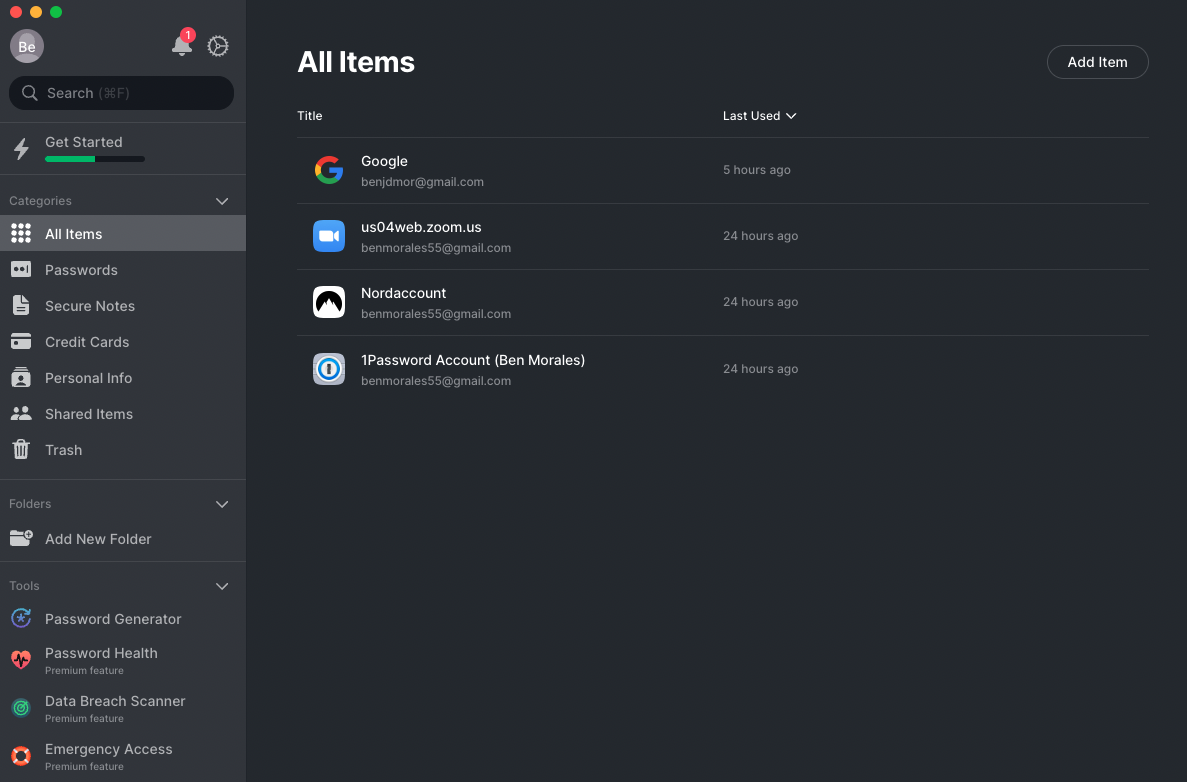
The NordPass interface is streamlined and the browser extension was seamless to install. On the other hand, Dashlane’s browser extension was a bit cluttered because it’s basically a condensed version of the desktop. The good part about that is consistency. But I feel it is not as streamlined as it could be.
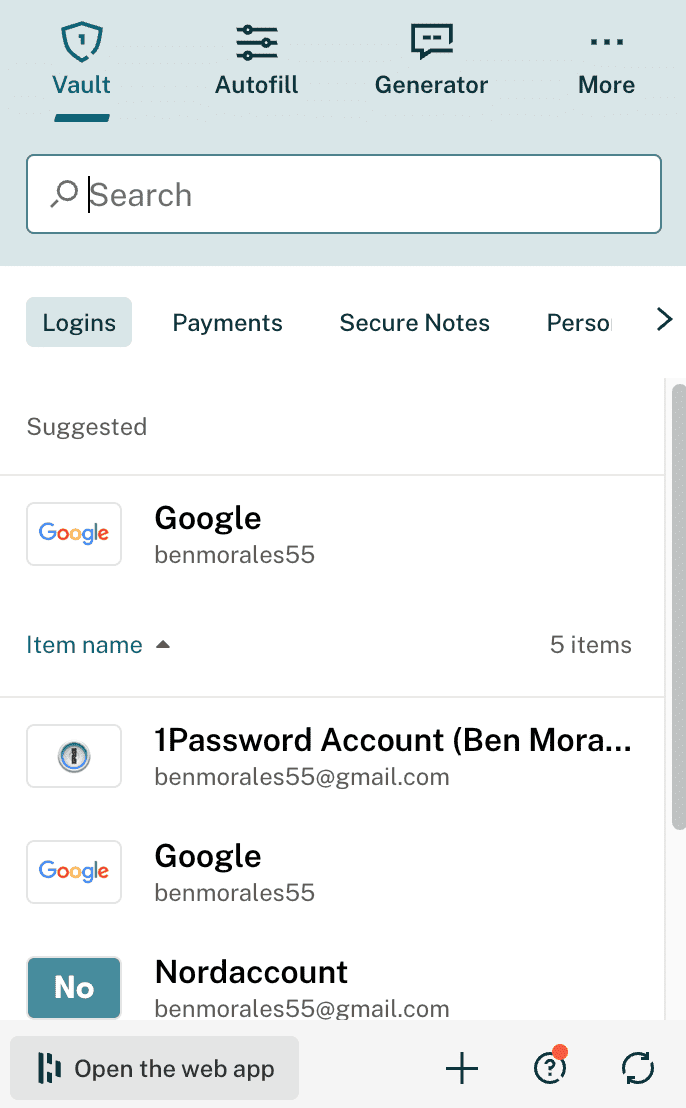
With NordPass, the MacOS app includes categories for passwords, secure notes, credit cards, and personal data, along with shared items. However, you can only share individual items, not an entire folder. This isn’t necessarily a disadvantage, but it depends on how you plan on using the password manager. If I were working in a large group, I’d want the ability to set up a shared folder.

To import passwords from other password managers into NordPass or Dashlane, you have to export passwords to a CSV file. I felt this was a simple process, though with Dashlane, you can’t import a CSV file to Dashlane using the iOS or Safari app. You must use Dashlane’s web app or Android app. NordPass’s Help Center also advised me to import saved passwords using the desktop app and Web Vault or from browsers using the Android app. So, the process is comparable.
NordPass vs. Dashlane: Form Filling
Form filling winner: Dashlane | |
|---|---|
| NordPass (3.0) | macOS: Brave, Chrome, DuckDuckGo, Edge, Firefox, Kiwi, Maxthon, Mi Browser, Opera, Phoenix, Samsung, Tor, Via, Vivaldi Android: Brave, Chrome, DuckDuckGo, Edge, Firefox, Kiwi, Maxthon, Mi Browser, Opera, Phoenix, Samsung, Tor, Via, Vivaldi |
| Dashlane (4.7) | macOS: Mobile browsers and apps (iOS 15 or later) Android: Mobile browsers and apps (Android Oreo or later) |
NordPass and Dashlane both offer plug-and-play form-filling — including logins, addresses, and credit card information — on both desktop and mobile.
To use NordPass autofill on a mobile device, the company recommends changing your primary password settings, which I did by going to Menu on my iPhone, tapping on Settings, and turning on AutoFill. A downside that puts Dashlane ahead in the form-filling category is inconsistency with NordPass autofill payment information.
The password manager was spotty with recognizing billing addresses and security codes. This is not totally uncommon with password managers when it comes to auto-filling more comprehensive fields.
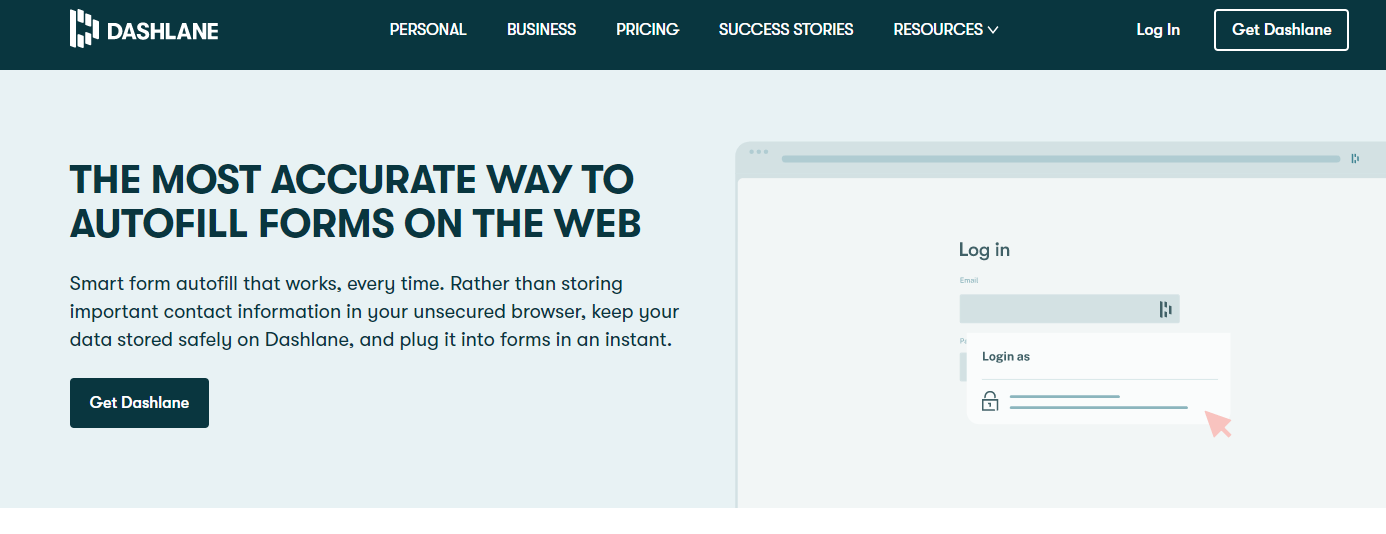
Overall, I found Dashlane’s built-in sections for logins, payment information, addresses, and IDs easy to input and autofill.
Winner: Dashlane wins for form-filling because its autofill feature is more consistent across the board.
NordPass vs. Dashlane: Security
Security winner: NordPass | |
|---|---|
| NordPass (5.0) |
|
| Dashlane (4.7) |
|
Most password managers use powerful 256-bit AES encryption, considered the gold standard and the type Dashlane offers. NordPass skips slightly ahead in the security category because it takes encryption to the next level with XChaCha20 encryption. You’re in good hands with 256-bit AES, and I feel even more confident from a security perspective knowing NordPass goes one step further.
The password manager’s location might not seem important, but think again. NordPass operates out of Panama, which is free from the Five Eyes Intelligence Oversight and Review Council (FIORC), so it is not under any legal obligation to share data. This and other intelligence alliances (Nine Eyes and Fourteen Eyes) are united to monitor and share internet user activity to protect national security. Panama is not part of these alliances.
On the other hand, Dashlane is based in New York City. It hosts servers on Amazon Web Services (AWS), a respected and secure cloud service that I trust. The company says it audits all products “to make sure there are no holes in the system.”
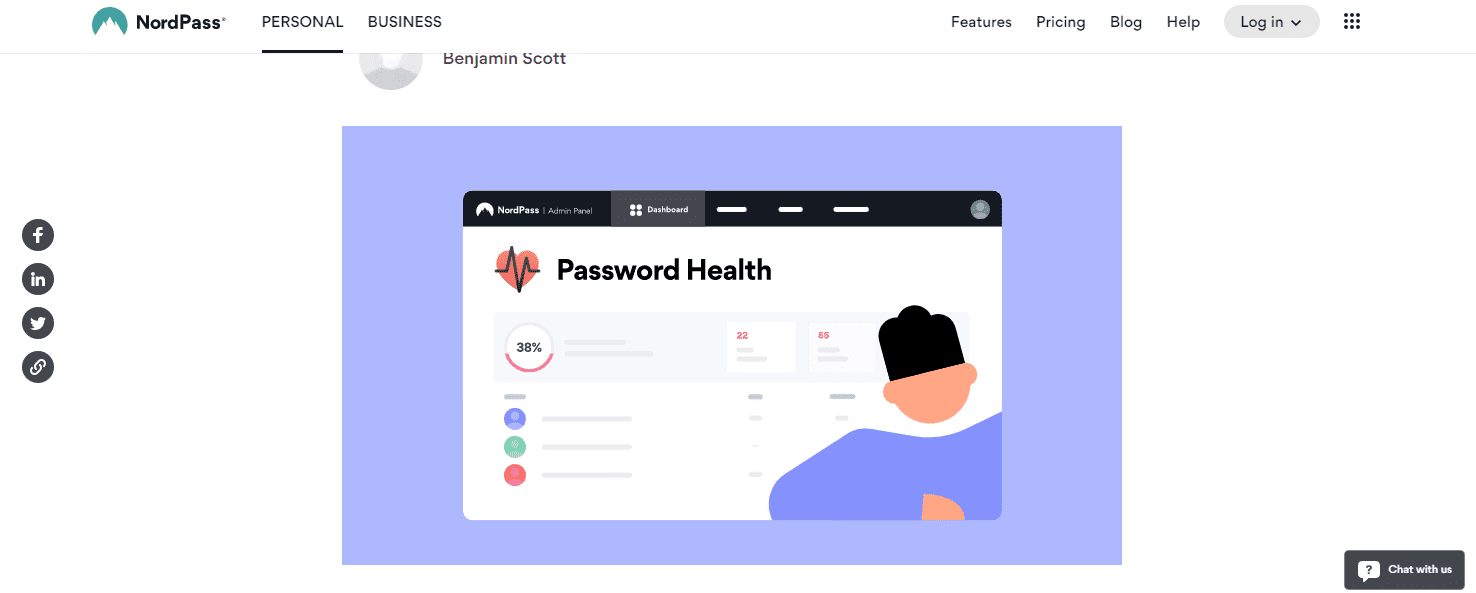
Both NordPass and Dashlane have built-in password generators, but you get more storage with NordPass, which provides 3GB when most password managers — including Dashlane — offer 1GB.
I like how Dashlane offers live dark web monitoring and a VPN if you select its Premier individual plan or Teams and Business tiers. You can also choose to add on Dashlane’s licensed version of Hotspot Shield which costs $12.99 per month on its own. If I elected this option as a Dashlane subscriber, I’d only have to pay $4.99 per month.
Both platforms are Service Organization Controls (SOC 2) compliant, meaning they have carefully documented security policies and undergo regular audits.
Winner: NordPass wins for security because of its next level with XChaCha20 encryption that goes beyond the already secure industry standard 256-bit AES encryption.
NordPass vs. Dashlane: 2FA
2FA winner: NordPass | |
|---|---|
| NordPass (5.0) |
|
| Dashlane (4.2) |
|
NordPass and Dashlane both offer 2FA through authenticator apps (which use time-based one-time passwords, or TOTPs) and physical security keys. Dashlane’s 2FA is optional and there is no biometric option, which would be preferred. You can enable MFA through the Dashlane authenticator.
Both offer backup codes as a way to log in and turn off 2FA, which can only be done on Dashlane’s web app.

I found NordPass also offers standard MFA options, and enabling it was simple to do. After opening the app in my browser, I selected the preferred MFA option, and it was plug-and-play to implement. I scanned a QR code and the rest was a breeze.
Winner: NordPass wins 2FA because of its backup codes and ability to enable biometrics.
Should You Get NordPass or Dashlane?
Bottom line winner: Dashlane | |
|---|---|
| Dashlane (4.7) |
Best for: Individuals or businesses that want premium features like a VPN and dark web monitoring. |
| NordPass (4.3) |
Best for: Individuals who want to store a high volume of passwords on one device |
NordPass and Dashlane both offer free plans for users with one device. But for a few more dollars per month, you can get a VPN and robust features like dark web monitoring with Dashlane. If all you need is a basic password manager for a device, go with either free plan. Yet where Dashlane stands out, in my opinion, is its capabilities when you move up to the Premium plan for individuals, or Team and Business plans for enterprises.
NordPass has a slight edge in the security department because of its advanced XChaCha20 encryption, and neither of these password managers have reported security breaches as of the time of publication. That said, the industry gold standard 256-bit AES encryption gives me peace of mind that Dashlane’s security is top notch.
NordPass provides more storage than other password managers, offering 3GB no matter what plan you choose. For my purposes, the storage capacity wasn’t enough to put NordPass ahead because I don’t need that amount. You may decide otherwise.
Overall, NordPass slightly exceeded Dashlane in ratings for UX, security, and 2FA — but the wins were marginal when I considered the extra features you can access with Dashlane with its plan variety. Dashlane came out ahead in ratings for pricing and plans, platform compatibility, and form-filling. You might wonder why we rated Dashlane higher for pricing when it costs more than NordPass. This goes back to the value you gain for features like a VPN for the minor price difference.
Dashlane has business customers such as Wayfair, PepsiCo, and Bain Capital, which gives me confidence that it has a positive track record and reputation, and can more than handle my password management needs.
How I Evaluated NordPass vs. Dashlane
On the surface, all password managers essentially generate and store passwords. As I evaluated providers, I dug deeper, comparing software on what matters most, including price, platform compatibility, security, and other factors.
I signed up for a plan with each provider to test:
- Plan value: Most password managers offer various subscription plans from free to around $20 per month. While free plans may be sufficient for some, those that need more functionality may prefer paid plans. We included a wide array of free and paid password managers to find the one that works best for you.
- Platform compatibility: You likely access your online accounts from multiple devices, including desktops, laptops, tablets, phones, as well as through different web browsers. Your password manager should be compatible with various devices, operating systems and browsers, and sync seamlessly between them all.
- UX: This is how you interface with all the features and functions of your new password manager — if it’s bad, you’ll be less likely to use the service. While this is a highly subjective category and some will disagree, it’s important to provide an overview based on my experience.
- Form filling: A password manager doesn’t have to include form-filling, but it’s somewhat standard and the ease with which it performs that function can be the deciding factor in which password manager you ultimately choose.
- Security: Since a password manager is first and foremost a security tool, it should come with all of the most up-to-date standard security features. This includes the highest level of available encryption (256-bit AES with PBKDF2-HMAC-SHA512); 2FA, such as biometric logins or MFA, and a password generator.
- Two-factor authentication (2FA): Used all over the internet to protect your accounts, this is quickly becoming a standard security practice. 2FA is a great way to secure more sensitive accounts to ensure they’re not breached.
Learn more about our review methodology.

About the Password Manager, Gunnar Kallstrom:
Kallstrom is a Cyber Team Lead for a Department of Defense (DOD) contracting company in Huntsville, Alabama, and has also worked as a computer network defense (CND) Cyber Analyst. An author and content creator for a cybersecurity academy, Kallstrom spent nearly 15 years in the Army as a musician before entering the cybersecurity field.
He holds a bachelor’s degree in music from Thomas Edison State University and a master’s in organizational development and leadership from the University of the Incarnate Word.
Kallstrom has completed several Computing Technology Industry Association (CompTIA) courses, including Security+, Network+, A+ Core 1, and A+ Core 2. He earned a CompTIA Security+ Certification. Additionally, he has completed the Cyber Warrior Academy program with more than 800 hours of hands-on, intensive, and lab-driven technical training in cybersecurity methods and procedures.
Passionate about all things cyber, Kallstrom was a speaker on a panel at the 2022 InfoSec World conference, giving a talk entitled “Hacking into a Cyber Career – True Stories.” Kallstrom is also a mentor to entry-level cybersecurity candidates seeking to break into the field. When he’s not working, he still enjoys playing guitar and fishing (not phishing).

